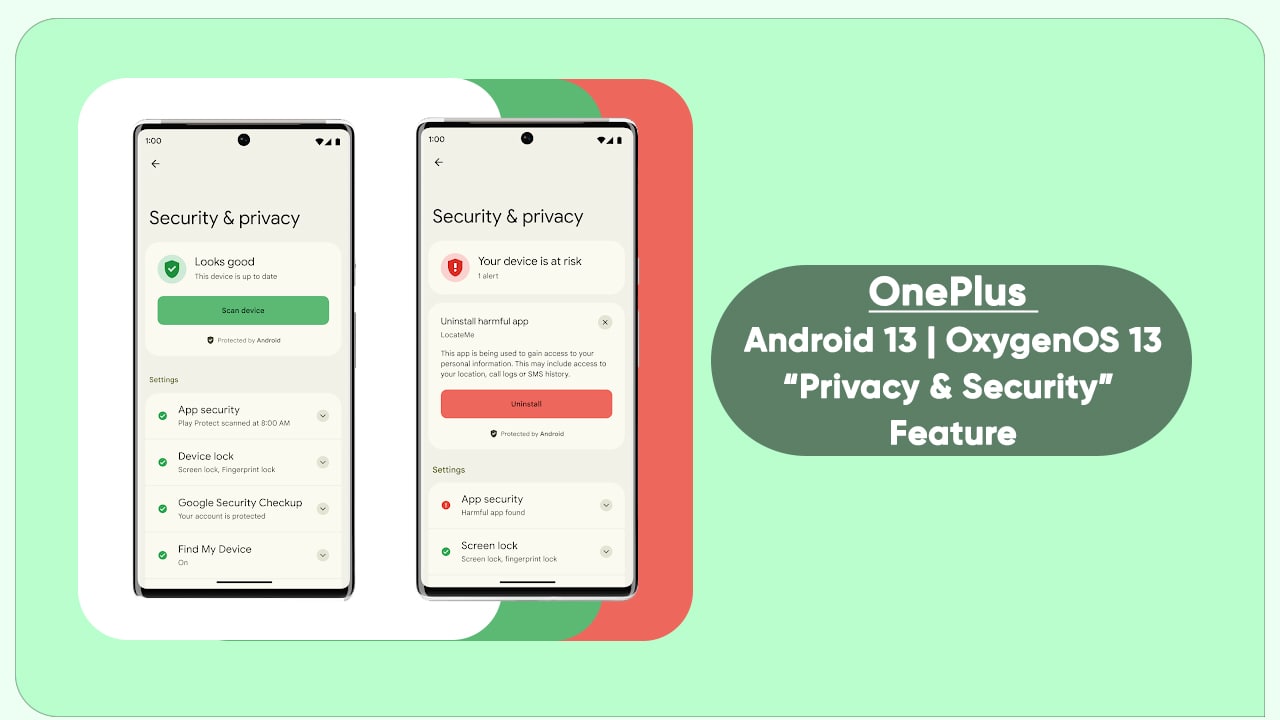Google talked about Android 13 in detail during its meetup at I/O 2022. Where the company also talked about bringing new security and privacy settings to a special page known simply as “Security & Privacy”. Likewise, among several OEMs, OnePlus is also testing the Android 13 beta, if I’m not wrong the company will also apply this Android 13 Security and Privacy settings feature on its devices.
“JOIN US ON TELEGRAM”
OnePlus Android 13/OxygenOS 13 Security and Privacy Settings
At the moment, Google is testing several new features including Security and Privacy settings. All these features will be available to the users right after the Android 13 stable update. On the other hand, OnePlus will also offer the same feature to its users to provide better security.
Coming to the point, in Android 13, Google implemented various enhancements to help mitigate potential security vulnerabilities that app developers may accidentally open. This includes making runtime receivers more secure by allowing developers to determine whether a particular broadcast receiver should be exported to their applications and viewed by other applications on the device.
The latest OnePlus Android 13-based OxygenOS 13 Security and Privacy settings feature gives consumers more ways to build privacy-focused apps. Apps can now implement a new photo selector that allows the user to precisely select the photos or videos they want to share without giving another app access to their media libraries.
With Android 13, the company also reduced the number of apps that require your location to work using the Nearby device permission introduced last year. For instance, you don’t need to turn on Location to enable Wi-Fi for some apps and situations.

Previously, they restricted apps from accessing your clipboard in the background and alerted you when an app accessed it. Android 13 automatically deletes your clipboard history shortly, so apps are prevented from seeing old copied information.
In Android 11, they started automatically resetting permissions for apps you haven’t used in a long time, and have since expanded this feature to devices running Android 6 and higher. Since then, Google automatically reset over 5 billion permissions. And in Android 13, app makers can go beyond proactively removing permissions on behalf of their users.
Finally, Google knows that notifications are important to many apps, but not always equally important to users. In Android 13, you’ll have more control over which apps you want to receive alerts from, as new apps on your device will need to ask for your permission by default before they can send you notifications.













